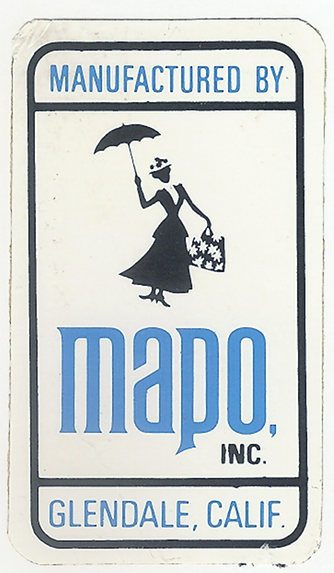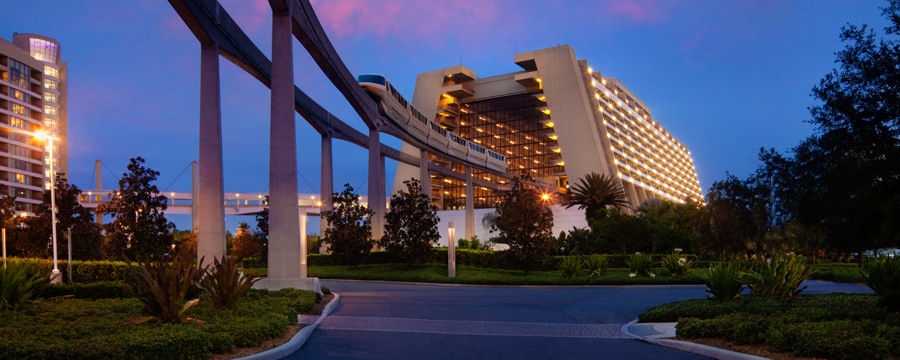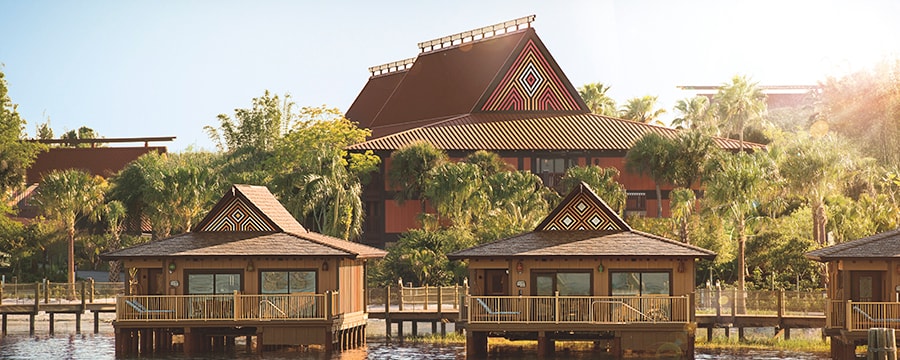Animator's Perspective V: Soft Pitch Fridays
Chapter 6: Soft Pitch Fridays
Post from the Riding with the Mouse Net-log by animator Terrell Little.
So, remember how Steve Hulett and I got in trouble for pitching an idea straight to Jim Henson? Well, we weren’t the only ones. Jim got in trouble for it too. The middle management were furious. They went to Tom Wilhite, and Tom went to Ron Miller. Memos came out reminding everyone what the proper avenues were for advancing your ideas.
Well, I can’t say for sure, but Jim must not have liked that. Perhaps he pushed back. Other than the crazy “boardroom” Muppet show at Card Walker’s retirement, I had no idea what happened inside the Halls of the Mighty. But he must have pushed back because in May of 1983 Ron Miller announced the beginning of what they were calling “Soft Pitch Fridays”. On the last Friday of the month, every month, creative artists would get the opportunity to make quick, 15-minute presentations to a team of 3 lead creative artists (current or former), managers, producers, and executives[1]. It was a chance to bypass the usual bureaucratic roadblocks and pitch straight to the Big Boys. If you made the cut, you got the chance to make a longer, formal “Hard Pitch” later on.
Steve and I were excited. Here was another chance! We agreed to team up on whatever came next. First pitch: Boudreaux’s Kitchen the series, intended for the Disney Channel or Saturday Morning Cartoons, whatever they saw as best.
We were rejected, hard.
You see, Soft Pitch was a luck-of-the-draw thing. Some days you got someone like Ron or Jim, who tended to like the more out-of-the-box stuff, but some days you got Card or Donn, who most assuredly did not. And we got Card, Woolie, and Ted Berman. Boudreaux was too “exotic” for them. The Short had gotten some positive mail after it broadcasted, but not enough, and not from the “right demographics”, apparently. It’d play in Pensacola, but not in Peoria.
I tried not to take it as something racial.
Steve and I tried again the next month, this time with Steve’s idea: The Three Musketeers, only with Mickey, Goofy, and Donald[2]. This time we got Ron Miller, Bernie Brillstein, and Tom Wilhite. They liked it. We got to second base!
But we got rejected at the Hard Pitch. This time it was the whole Executive Committee plus all of the Big Names in the animation department. Steve led the presentation (it was his idea), but he was super-nervous and kind of sputtered through it. Jim and Ron seemed to like the idea, but Card and Donn were both a hard “no”. That said, we did get some kind words from the committee. We were encouraged by Jim and Tom and Glen to try again another time. Steve and I toasted our near-miss that evening, but unbeknownst to us, it wasn’t the end of the project.
Other animators had better luck. Weird Tim Burton, clearly the company’s rising star by this point, got greenlit for a Short project in addition to his central role on The Black Cauldron: a stop-motion Short called The Nightmare Before Christmas, narrated by Vincent Price[3]. Despite some hesitance from the Big Wigs, Jim stood up for it and it appeared on the World of Magic 1983 Halloween Special, where it proved so popular that it got rerun on the Christmas Special that same year. It earned Burton his second Emmy nomination.
The grand slam king of Soft Pitch Friday, however, would be John Lasseter. He came prepared, with a 1-minute computer-assisted animation sequence featuring Max from Maurice Sendak’s Where the Wild Things Are[4]. He also got lucky: Jim Henson was part of the panel that day and Jim, it turned out, was practically obsessed with the book and had been trying to do a Muppet version for over a decade.
John went in looking to do a Short that covered the events of the book. He got that…and also got an option for a feature-length animated film of the same subject, assuming the Short did well, which, naturally, it did, stealing the 1983 Best Short Form Emmy from Tim that year. Where the Wild Things Are the animated feature, directed by John Lasseter and Glen Keane[5], would go into production the second that we were finished with The Black Cauldron.
The lucky bastards!
[2] Hulett came up with this same idea in 1983 in our timeline. It went into pre-production, but was ultimately passed over. It was resurrected later as 2004’s Mickey, Donald, Goofy: The Three Musketeers.
[3] Burton pitched this idea in 1983 in our timeline, but was shot down. Eventually, of course, it became a classic feature film. In 1984 Burton pitched and somehow (given its subject matter) got greenlit for the live action short Frankenweenie. When the execs saw the Short, they were appalled and he was fired from Disney shortly thereafter. The silver lining for him was that others in Hollywood recognized its genius and he soon got chosen to direct Pee Wee’s Big Adventure (1985), the movie that launched his highly successful career. Here, Jim Henson, who had a growing love for the macabre and a personal friendship with Vincent Price (you seriously need to see the Vincent Price episode of The Muppet Show!), and who also loves any bad puns, is an enthusiastic fan. On a tangentially related note, Burton and Jerry Rees are quite busy (and quite happy) working on Cauldron in the early 1980s (teaser!) and thus did not have the time nor feel the need to produce the surreal Luau (1982), which is butterflied in this timeline.
[4] Completed in our timeline too, but went nowhere. It’s in my opinion a generation ahead of its time with its use of computer graphics and computer-assisted framing. Jim Henson’s love for the book and his longstanding desire to secure the rights were true in our timeline too.
[5] The son of Bil Keane of Family Circus fame. That kid Billy who was the “troublemaker” (relatively speaking) running around the neighborhood? That’s Glen!
Post from the Riding with the Mouse Net-log by animator Terrell Little.
So, remember how Steve Hulett and I got in trouble for pitching an idea straight to Jim Henson? Well, we weren’t the only ones. Jim got in trouble for it too. The middle management were furious. They went to Tom Wilhite, and Tom went to Ron Miller. Memos came out reminding everyone what the proper avenues were for advancing your ideas.
Well, I can’t say for sure, but Jim must not have liked that. Perhaps he pushed back. Other than the crazy “boardroom” Muppet show at Card Walker’s retirement, I had no idea what happened inside the Halls of the Mighty. But he must have pushed back because in May of 1983 Ron Miller announced the beginning of what they were calling “Soft Pitch Fridays”. On the last Friday of the month, every month, creative artists would get the opportunity to make quick, 15-minute presentations to a team of 3 lead creative artists (current or former), managers, producers, and executives[1]. It was a chance to bypass the usual bureaucratic roadblocks and pitch straight to the Big Boys. If you made the cut, you got the chance to make a longer, formal “Hard Pitch” later on.
Steve and I were excited. Here was another chance! We agreed to team up on whatever came next. First pitch: Boudreaux’s Kitchen the series, intended for the Disney Channel or Saturday Morning Cartoons, whatever they saw as best.
We were rejected, hard.
You see, Soft Pitch was a luck-of-the-draw thing. Some days you got someone like Ron or Jim, who tended to like the more out-of-the-box stuff, but some days you got Card or Donn, who most assuredly did not. And we got Card, Woolie, and Ted Berman. Boudreaux was too “exotic” for them. The Short had gotten some positive mail after it broadcasted, but not enough, and not from the “right demographics”, apparently. It’d play in Pensacola, but not in Peoria.
I tried not to take it as something racial.
Steve and I tried again the next month, this time with Steve’s idea: The Three Musketeers, only with Mickey, Goofy, and Donald[2]. This time we got Ron Miller, Bernie Brillstein, and Tom Wilhite. They liked it. We got to second base!
But we got rejected at the Hard Pitch. This time it was the whole Executive Committee plus all of the Big Names in the animation department. Steve led the presentation (it was his idea), but he was super-nervous and kind of sputtered through it. Jim and Ron seemed to like the idea, but Card and Donn were both a hard “no”. That said, we did get some kind words from the committee. We were encouraged by Jim and Tom and Glen to try again another time. Steve and I toasted our near-miss that evening, but unbeknownst to us, it wasn’t the end of the project.
Other animators had better luck. Weird Tim Burton, clearly the company’s rising star by this point, got greenlit for a Short project in addition to his central role on The Black Cauldron: a stop-motion Short called The Nightmare Before Christmas, narrated by Vincent Price[3]. Despite some hesitance from the Big Wigs, Jim stood up for it and it appeared on the World of Magic 1983 Halloween Special, where it proved so popular that it got rerun on the Christmas Special that same year. It earned Burton his second Emmy nomination.
The grand slam king of Soft Pitch Friday, however, would be John Lasseter. He came prepared, with a 1-minute computer-assisted animation sequence featuring Max from Maurice Sendak’s Where the Wild Things Are[4]. He also got lucky: Jim Henson was part of the panel that day and Jim, it turned out, was practically obsessed with the book and had been trying to do a Muppet version for over a decade.
John went in looking to do a Short that covered the events of the book. He got that…and also got an option for a feature-length animated film of the same subject, assuming the Short did well, which, naturally, it did, stealing the 1983 Best Short Form Emmy from Tim that year. Where the Wild Things Are the animated feature, directed by John Lasseter and Glen Keane[5], would go into production the second that we were finished with The Black Cauldron.
The lucky bastards!
[1] Michael Eisner and Jeff Katzenberg developed a similar but much more informal idea once they took over in 1984 in our timeline. They called it a “Gong Show.” Animators or other artists called out ideas (“The Little Mermaid”) and Eisner would say “Gong” if he didn’t like it or give it a shot if he did. Jeff Katzenberg’s idea (“Oliver Twist with Dogs”) got the green light, but “The Little Mermaid” did not, at least at first. [2] Hulett came up with this same idea in 1983 in our timeline. It went into pre-production, but was ultimately passed over. It was resurrected later as 2004’s Mickey, Donald, Goofy: The Three Musketeers.
[3] Burton pitched this idea in 1983 in our timeline, but was shot down. Eventually, of course, it became a classic feature film. In 1984 Burton pitched and somehow (given its subject matter) got greenlit for the live action short Frankenweenie. When the execs saw the Short, they were appalled and he was fired from Disney shortly thereafter. The silver lining for him was that others in Hollywood recognized its genius and he soon got chosen to direct Pee Wee’s Big Adventure (1985), the movie that launched his highly successful career. Here, Jim Henson, who had a growing love for the macabre and a personal friendship with Vincent Price (you seriously need to see the Vincent Price episode of The Muppet Show!), and who also loves any bad puns, is an enthusiastic fan. On a tangentially related note, Burton and Jerry Rees are quite busy (and quite happy) working on Cauldron in the early 1980s (teaser!) and thus did not have the time nor feel the need to produce the surreal Luau (1982), which is butterflied in this timeline.
[4] Completed in our timeline too, but went nowhere. It’s in my opinion a generation ahead of its time with its use of computer graphics and computer-assisted framing. Jim Henson’s love for the book and his longstanding desire to secure the rights were true in our timeline too.
[5] The son of Bil Keane of Family Circus fame. That kid Billy who was the “troublemaker” (relatively speaking) running around the neighborhood? That’s Glen!




